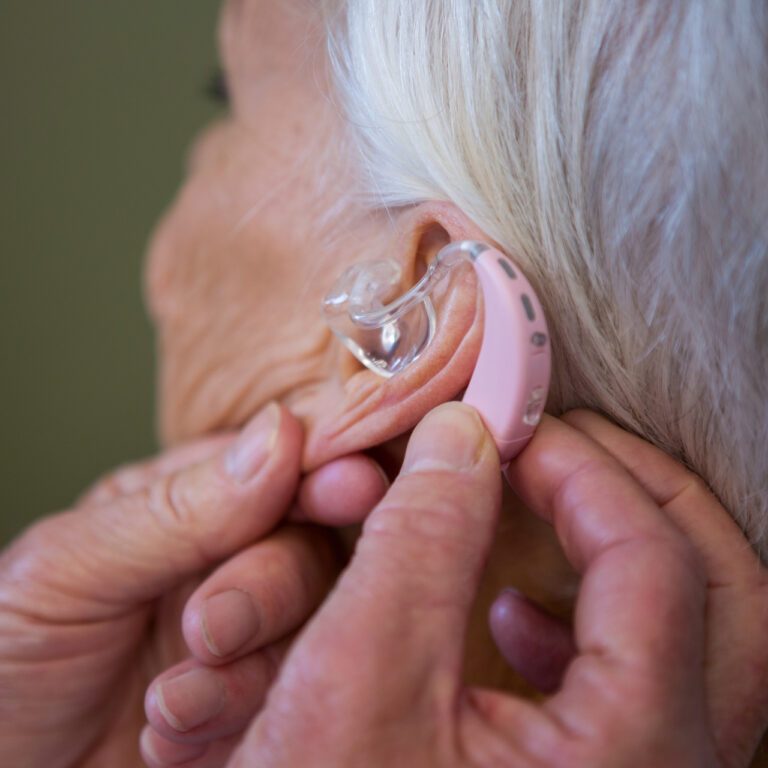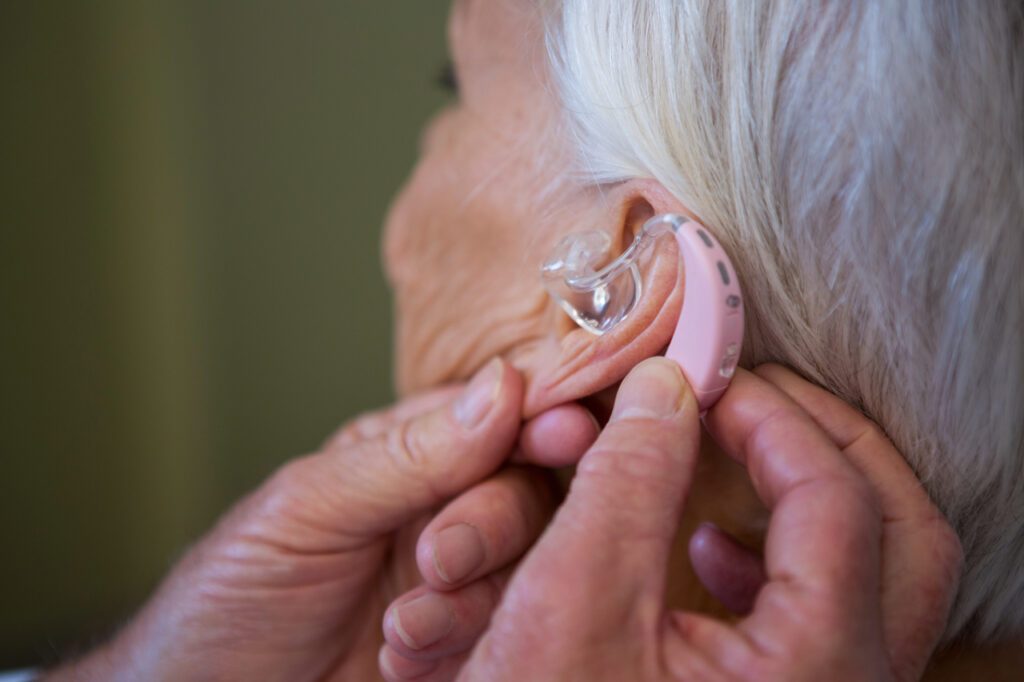Hearing loss is a widespread issue that impacts the lives of millions around the world. It doesn’t discriminate based on age or background, affecting both the young and the old.
The consequences of hearing loss go far beyond the individual, touching the lives of their loved ones and even influencing the economy. Fortunately, there is hope. Advances in technology, such as hearing aids and cochlear implants, have proven to be transformative in improving the quality of life for those with hearing loss.
In this blog, we will explore the three main types of hearing loss and shed light on how they can be better understood and addressed.

How Common Is Hearing Loss?
Hearing loss is a remarkably common problem, with millions worldwide experiencing its effects. In the United States alone, approximately 48 million individuals of all age groups are affected by hearing loss. This staggering number shows the issue’s magnitude and highlights the need for greater awareness and understanding.
Hearing loss is neither age nor gender-specific and can affect people of every background. It’s a common problem that needs attention and proactive steps to ensure it’s detected early and treated properly. The more we learn about hearing loss and its prevalence, the better equipped we will be to create a welcoming and accepting community for people with this impairment.
Hearing Disorder Types
Hearing loss can be classified into different types, each with its own characteristics and causes. By learning about these different types, we can understand the nuances of various hearing impairments, how to prevent them and find effective treatments. Let’s explore the three main types of hearing loss: sensorineural hearing loss, conductive hearing loss, and mixed hearing loss.
Sensorineural Hearing Loss
Sensorineural hearing loss is the most common type of hearing loss out there. It happens when there’s damage to the inner ear or the pathway that connects the ear to the brain, called the auditory nerve.
This type of hearing loss can be caused by several reasons, such as:
- Getting older: As we age, the cells in our inner ear can deteriorate, leading to hearing loss.
- Certain medications: Some medications can cause sensorineural hearing loss as a side effect.
- Genetic factors: Some people are born with genetic mutations that can cause sensorineural hearing loss.
- Exposure to loud noises: Being around loud sounds or music for an extended period can damage the tiny hair cells in your inner ear leading to noise-induced hearing loss. This type of noise-induced hearing loss (NIHL) is preventable and often treatable with proper measures.
Symptoms of NIHL include difficulty hearing high-pitched sounds, muffled hearing, and a feeling of fullness in the ears. This condition can significantly impact individuals in various occupations, particularly those exposed to loud noises regularly, such as construction workers, factory workers, musicians, and military personnel.
One common side effect of NIHL is tinnitus, a persistent ringing or buzzing sound in the ears that can be both bothersome and distressing. It is crucial for individuals in high-risk occupations to take preventive measures, such as wearing ear protection, to minimize the risk of developing NIHL and its associated symptoms.
Treatment options for sensorineural hearing loss include hearing aids, cochlear implants (devices that help send sound signals to the brain), and assistive listening devices that make hearing easier in different situations.
Conductive Hearing Loss
Conductive hearing is when the sound waves can’t reach the inner ear as they should. Imagine a blockage or damage in your outer ear or middle ear that’s getting in the way, preventing the sound from reaching its destination. This can make it harder for you to hear properly.
Several common factors, such as excessive earwax accumulation, persistent ear infections, or fluid in the middle ear, can cause conductive hearing loss. Structural abnormalities in the ear can also contribute to this type of hearing loss.
People with conductive hearing loss often hear better in noisy environments but may struggle with softer sounds and catching all the details in conversations. Fortunately, treatment options are available based on the cause of the hearing loss. Medications or surgery can be effective in some cases, and using hearing aids is also a great option.
Mixed Hearing Loss
Mixed hearing loss is a combination of sensorineural and conductive hearing loss, which means it’s a two-in-one situation. It happens when there are problems in both the inner and outer/middle ear. In simpler terms, there may be damage or blockage in the auditory pathway and issues with how sound waves are transmitted.
The causes of mixed hearing loss can be a mix of sensorineural and conductive hearing loss factors. When it comes to treatment, it depends on the specific conditions present. It could involve a combination of medical interventions, like medications or surgery, and using hearing aids or other assistive devices to help improve your hearing. The goal is to find the best combination of approaches for you.
Remember, if you suspect hearing loss, it’s important to consult with a hearing care professional who can conduct a hearing test and assess your specific situation. The delicate structures of the ear, including the tympanic membrane and tiny hair cells, play crucial roles in hearing, and understanding the type of hearing loss you have can guide your path toward better hearing health.
Treating Hearing Loss
Living with hearing loss can be challenging, but the good news is that various treatment options are available to help you regain your hearing and improve your quality of life. Let’s explore some of the most common and effective ways to treat hearing loss.
Hearing Aids
One of the most popular and effective solutions for many individuals with hearing loss is hearing aids. These small electronic devices amplify sounds, making them clearer and easier to hear. They come in different styles and sizes, including behind the ear, in the ear, and completely in the ear canal, providing options that suit other preferences.
Hearing aids can be customized to your specific hearing needs and programmed to enhance speech understanding while filtering out background noise. By wearing hearing aids, you can significantly improve your ability to communicate and participate in conversations.

Cochlear Implants
Cochlear implants offer a more advanced solution for more severe to profound hearing loss. Cochlear implants have two main components: an external processor worn behind the ear and an internal implant surgically placed under the skin. They bypass the damaged parts of the ear and directly stimulate the auditory nerve, providing sound signals to the brain.
Cochlear implants are particularly beneficial for individuals who do not benefit from hearing aids or have severe damage to the inner ear. They can greatly enhance speech understanding and sound perception for eligible patients.

Assistive Listening Devices (ALDs)
Besides hearing aids and cochlear implants, assistive listening devices (ALDs) are also designed to improve hearing in specific situations. ALDs work alongside or in conjunction with hearing aids to enhance sound transmission and clarity. Examples of ALDs include:
- FM Systems: These systems use a transmitter and receiver to wirelessly transmit sound to the user’s ears, reducing background noise and improving speech understanding.
- Loop Systems: Loop systems use electromagnetic fields to transmit sound to hearing aids or cochlear implants, which are particularly useful in public spaces like theaters or churches.
- Infrared Systems: Infrared systems use infrared light signals to transmit sound, commonly used in classrooms or conference rooms.
Treating Underlying Causes
In some cases, treating the underlying cause of hearing loss can help improve or restore hearing. For conductive hearing loss caused by earwax buildup or infections, removing the blockage or appropriate medical treatment can resolve the issue.
Medical interventions, such as surgery, may be necessary for certain types of hearing loss caused by abnormalities in the ear structure or tumors. Consulting with an audiologist or an ear, nose, and throat specialist will help determine the most suitable treatment approach for your condition.
Remember, the best treatment option for you will depend on the type and severity of your hearing loss and your individual preferences and lifestyle. Consulting with a qualified healthcare professional will help you make an informed decision and find the most effective solution to your hearing needs.
Get the Best Deals with Great Hearing Benefits
Great Hearing Benefits is a leading provider of comprehensive hearing service plans. We offer administrative support and a range of programs for commercial, union, and healthcare organizations. Our commitment to exceptional customer service is reflected in consistently high Net Promoter Scores (NPS) from satisfied patients. With us, your members will receive ongoing care and protection for their hearing aids, ensuring a transformative experience.
Discover why no other company can match Great Hearing Benefits‘ value and quality of service.




